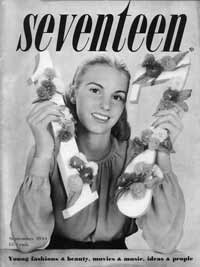All the day long,
Whether rain or shine
She’s part of the assembly line.
She’s making history,
Working for victory
Rosie the Riveter
Rosie the Riveter is
a cultural icon of the United States, representing the American
women who worked in factories during WWII, many of whom
produced munitions and war supplies. These women sometimes took
entirely new jobs replacing the male workers who were in the military. Rosie
the Riveter is commonly used as a symbol of feminism and women's
economic power.
The term
"Rosie the Riveter" was first used in 1942 in a song of the same name
written by Redd Evans and John Jacob Loeb. The song was recorded by
numerous artists, including the popular big band leader Kay
Kyser, and became a national hit. The song portrays "Rosie" as a
tireless assembly line worker, doing her part to help the American war
effort.







